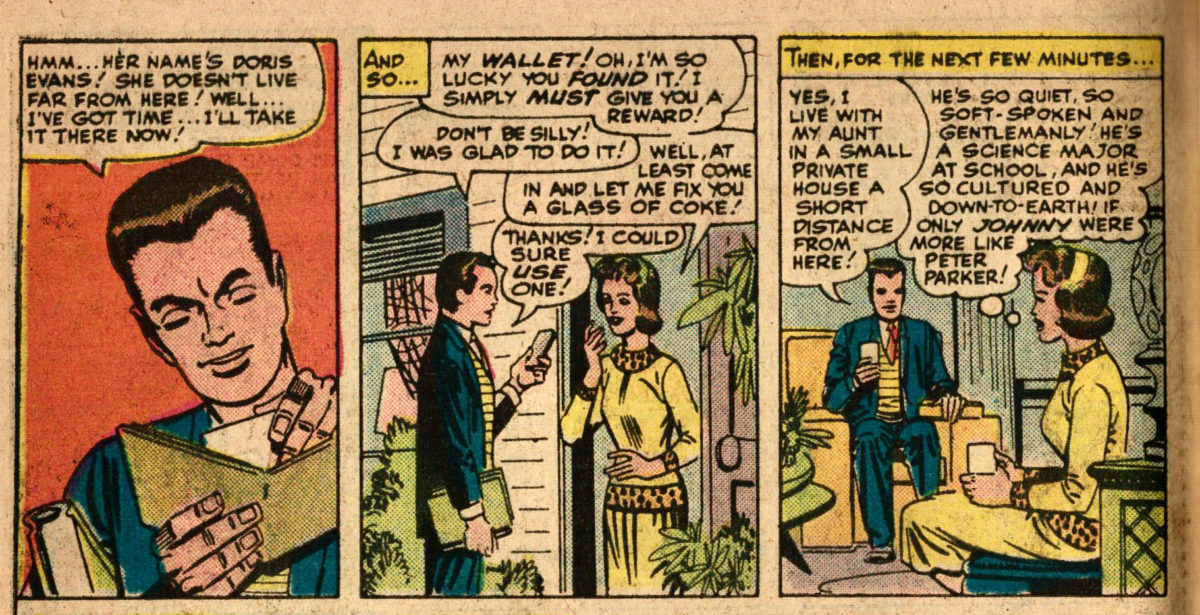Featuring: Avengers
Release: May 5, 1964
Cover: July 1964
12 cents
Written by the inspired typewriter of: Stan Lee
Drawn by the enchanted pencil of: Jack Kirby
Inked by the gifted brush of: Chic Stone
Lettered by the scratch pen of: S. Rosen
23 pages

As if it wasn’t hard enough trying to figure out how to fit the Avengers’ solo adventures around this title, issue 5 ended with an urgent call from the Teen Brigade to go on a mission unrelated to the Lava Men adventure they just had, which itself was unrelated to the Hulk adventure that started that issue. Leaving almost no space for solo adventures.
Here, the narration informs us they are still on the way to New York to respond to the urgent call, but needed to refuel in Chicago.

Between New York and Chicago, Iron Man and Giant-Man have gotten new costumes, and Wasp has a new hairdo and headpiece.
Captain America meanwhile has new glove magnets and miniature transistors installed in his shield that allow him to control its motion.
Iron Man designed the shield transistors. He is apparently an engineering genius on par with Tony Stark, the man nobody has ever seen him with, despite being Stark’s bodyguard.

And then Thor gives Captain America his mail. Wait? What? I thought this was a refueling stop in Chicago. Where did they get the mail? Where are they?
Not many details in the scene. Some equipment makes it look like a lab. Cap is sitting on a chair, so they seem to not be on a plane or at a refueling station.
Continue reading “Avengers #6”





























